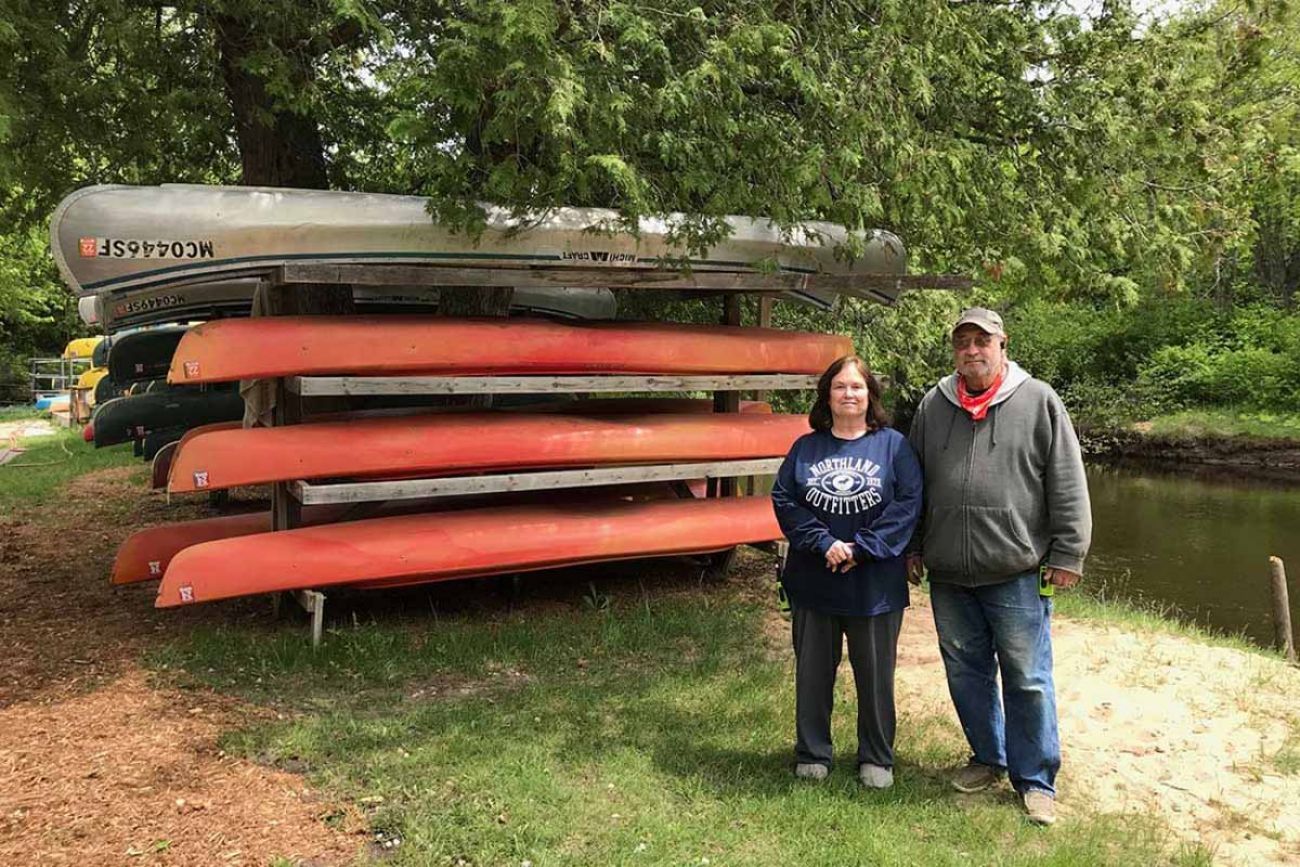Michigan’s outdoor recreation boom is becoming a business boom

- The pandemic introduced throngs of newcomers to camping, kayaking and other outdoor pursuits
- The boom has meant big gains for parts of Michigan’s economy
- State officials hope to capitalize on the trend
Michigan’s COVID-19 outdoor recreation boom has produced a subsequent business boom, according to a new federal report on the state’s outdoor scene.
Buoyed by a global pandemic that shuttered public gathering spaces and pushed people outdoors, Michigan’s outdoor recreation economy grew by 15.4 percent last year, contributing $10.8 billion and 109,595 jobs to the state’s economy, according to a new report by the federal Bureau of Economic Analysis.
That’s more than double the rate of growth for Michigan’s economy as a whole during the same time frame, and an increase of 1,600 jobs and $1.3 billion in economic impact over 2020.
Related:
- Uncertainty for Michigan rivers, residents as Consumers reconsiders its 13 dams
- Study finds lake cleanups help house values recover
- With wolf plan complete, Michiganders lobby state on possibility of a hunt
Fresh off those stats, the state this month moved its Office of Outdoor Recreation Industry from the Michigan Department of Natural Resources into the Michigan Economic Development Corporation, signaling a growing commitment to viewing Michigan’s outdoors as an economic driver.
The state this week also released its latest five-year plan for Michigan’s outdoor recreation scene, which stresses the need for more investment in local outdoor amenities as record numbers of people continue to flock to Michigan’s trails, waterways and parks.
Statistics collected as part of the five-year plan show that a quarter of Michiganders are getting outside more today than they were before the pandemic. Early data suggests those new habits have staying power, said Brad Garmon, director of the state Office of Outdoor Recreation Industry.
“There are things that are probably going to be lifestyle choices that will stick around,” Garmon said.
Bridge Michigan spoke with Garmon about Michigan’s changing outdoor recreation scene, and how he sees Michigan capitalizing on its growth. Here are key takeaways:
Kayaking and biking are up, hunting and snowmobiling are down.
The federal statistics show boating and fishing were the most economically-impactful pursuits, accounting for 948 million dollars last year. Next came RVing, followed by hunting and related sports.
But below those topline figures, Michigan’s outdoor recreation scene is showing signs of change.
Paddlesports and bicycling are growing dramatically more popular, while hunting and snow sports are on the wane.
The gradual loss of enthusiasm for hunting is nothing new; Michigan hunting participation has declined by 2-3 percent annually since the 1990s as older hunters age out and younger generations opt for other pursuits.
Garmon attributed the decline of snow sports partly to a momentary lapse caused by the pandemic, and partly to an alarming long-term trend of waning winters as the globe warms.
“Shorter seasons, less dependable snow — that’s affecting snow sports across the board,” Garmon said.
And it’s forcing snow tourism-dependent industries and communities to innovate. More ski hills are manufacturing snow during lackluster winters, Garmon said. And communities that have long thrived on the reputation of their snowmobile trails and ski hills are investing in mountain biking trails and zip lines to capture tourists when snow is thin.
Adapting to change may mean investing in manufacturing.
Garmon sees an opportunity to offset the loss of some winter tourism by building more manufacturing and innovation into Michigan’s outdoor economy.
“We should be able to make more, design more, test more gear,” he said. “And that’s going to help communities in the long term, so maybe you’re designing and testing skis here and you have to fly out west to do some skiing sometimes.”
Marquette, for instance, is building out a business incubator to support outdoor start-up companies. Garmon said he hopes to see more equipment and apparel manufacturing in Michigan, pointing to shoe company HOLO Footwear’s new Grand Rapids headquarters as an example.
He also said there’s opportunity for Michigan to cultivate an electric boating, ATV and snowmobile manufacturing industry alongside efforts to make the state a hub for electric vehicle manufacturing.
Making the case for more trails and parks close to home
State officials polled Michiganders about their outdoor preferences as part of the recreation planning process. And they found that while boating and RVing might be big moneymakers, most people spend the bulk of their time outdoors walking in their neighborhoods or visiting local parks.
Garmon said that’s prompting state leaders to embrace an “evolving definition” of outdoor recreation — one that’s focused less on tourism and more on close-to-home amenities.
That also fits with the state’s goal of building out more equitable recreation access for those who are less willing or able to travel long distances to get outdoors.
“We should continue to support travel tourism,” Garmon said, “and we will. But we can also do a lot of this that’s closer to home.”
To that end, state lawmakers and Gov. Gretchen Whitmer earlier this year allocated $115 million for recreational greenways in Detroit and Grand Rapids, $20 million for sports-related tourism and recreation in northern Michigan, and $65 million in grants to local parks across Michigan.
State officials noted in Michigan’s draft recreation plan that those investments are still not enough.
Casting outdoor recreation as economic and public health development
Garmon said one way to close the funding gap is by starting to think of outdoor recreation amenities as economic development and public health assets.
Research done as part of the state’s five-year plan found that the health benefits of outdoor recreation save Michigan an average of $2.8 billion annually in avoided health costs.
And close-to-home amenities are also a recruitment tool for businesses looking to lure talent. Access to outdoor recreation is the number one reason tech professionals live in Utah, for example.
“We want to keep people, we want to keep our college graduates, we want to keep our young people and provide them opportunities,” Garmon said. “Outdoor recreation is a way to do that.”
To that end, Garmon said his office is focused on helping cities build recreation into their regional economic development strategies, which may allow them to tap into new sources of federal funding for bike trails, parks and other outdoor amenities.
“We’re starting to think of those things less as amenities, and more as infrastructure,” Garmon said.
Michigan Environment Watch
Michigan Environment Watch examines how public policy, industry, and other factors interact with the state’s trove of natural resources.
- See full coverage
- Subscribe
- Share tips and questions with Bridge environment reporter Kelly House
Michigan Environment Watch is made possible by generous financial support from:
Our generous Environment Watch underwriters encourage Bridge Michigan readers to also support civic journalism by becoming Bridge members. Please consider joining today.
See what new members are saying about why they donated to Bridge Michigan:
- “In order for this information to be accurate and unbiased it must be underwritten by its readers, not by special interests.” - Larry S.
- “Not many other media sources report on the topics Bridge does.” - Susan B.
- “Your journalism is outstanding and rare these days.” - Mark S.
If you want to ensure the future of nonpartisan, nonprofit Michigan journalism, please become a member today. You, too, will be asked why you donated and maybe we'll feature your quote next time!






